Ever
notice
how
a
great
personal
trainer
can
make
someone
feel
like
they’re
the
only
person
in
the
room?
That
kind
of
magic
goes
way
beyond
squats
and
push-ups.
There’s
a
lot
involved
in
guiding
people
on
a
fitness
journey,
and
much
of
it
has
more
to
do
with
empathy,
communication,
and
genuine
connection
than
plain
old
exercise
instruction.
Sounds
like
a
lot?
It
can
be,
but
it’s
worth
it.
Let’s
walk
through
the
key
elements
that
elevate
a
trainer
from
decent
to
incredible.
Quick
Reference
|
Skill Category |
Description |
Impact on Client Success |
|
Communication Skills |
Clear instructions, active listening, tailored messaging |
Fosters trust encourages motivation, boosts adherence |
| Empathy |
Compassion for emotional hurdles, personalized approach |
Builds a supportive environment, fuels long-term commitment |
|
Adaptability & Flexibility |
Customized programs, the ability to switch plans or exercises on the fly |
Ensures safety, caters to individual needs, prevents boredom |
| Professionalism |
Timeliness, ethical behavior, ongoing education |
Establishes credibility, maintains standards, promotes a secure environment |
|
Motivation & Inspiration |
Goal-setting, positive environment, leading by example |
Energizes clients, helps push past tough spots, nurtures self-belief |
|
Planning & Preparation |
Thoughtful session design, progress tracking, data-driven adjustments |
Offers structure, holds clients accountable, boosts confidence |
|
Holistic Approach |
Integration of nutrition, stress management, sleep, and daily habits |
Enhances overall results, encourages total well-being, prevents burnout |
|
Safety & Injury Prevention |
Assessing fitness levels, teaching form, gradual progression |
Keeps clients in the game, builds trust, reduces downtime from injuries |
| Patience |
Accepting slow progress, providing encouragement, consistent support |
Fosters resilience, cements loyalty, sustains motivation |
Good
Communication
Matters
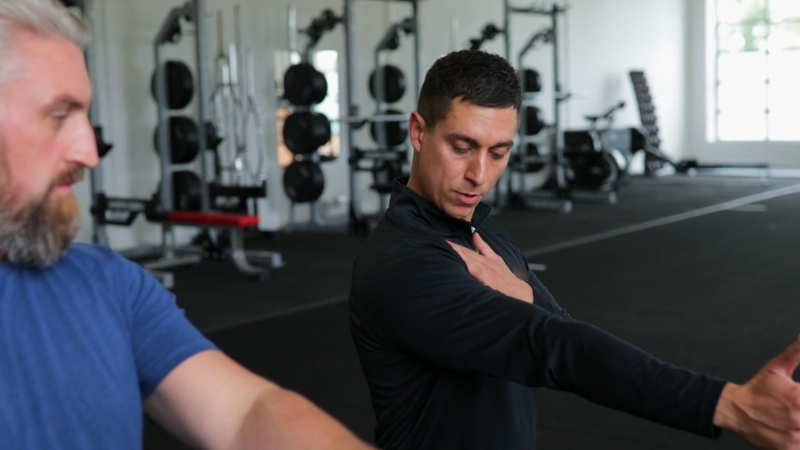
an
empathetic
connection
is
key
to
boosting
client
motivation
A
lot
of
new
trainers
think
it’s
all
about
yelling,
“One
more
rep!”
But
verbal
direction
is
just
part
of
the
whole
picture.
People
come
in
with
their
own
life
experiences,
body
types,
health
conditions,
and
motivations.
Clear,
down-to-earth
talk
makes
a
huge
difference.
Ever
had
a
teacher
who
made
a
hard
subject
feel
easy?
That’s
the
vibe
to
aim
for
as
a
trainer.
-
Active
Listening:
One
of
the
biggest
ways
to
show
respect
for
a
client
is
by
hearing
them
out—completely.
People
share
goals,
worries,
and
stories
that
shape
every
workout.
That’s
not
fluff.
That’s
crucial
data. -
Adapting
the
Message:
A
brand-new
client
who’s
never
touched
a
dumbbell
might
need
simpler
language.
An
experienced
lifter
might
enjoy
deeper
discussions
involving
muscle
groups
and
advanced
biomechanics.
Same
role,
different
styles. -
Non-Verbal
Cues:
Eye
contact,
nods,
a
thumbs
up—these
small
signals
show
you’re
there
for
someone
as
they
grind
through
challenging
sets.
It’s
also
about
catching
a
client’s
posture
or
expression
that
might
say,
“I’m
uncomfortable,
but
I’m
afraid
to
speak
up.”
Clear,
empathetic
connection
is
one
of
the
top
ways
to
boost
client
motivation.
Research
published
in
Applied
Studies
in
Agribusiness
and
Commerce
emphasizes
that
strong
communication
keeps
people
engaged
long-term.
Who’s
going
to
quit
on
a
trainer
who
actually
listens?
Empathy
It’s
impossible
to
be
an
effective
coach
without
caring
about
what
a
client
is
going
through.
Like
those
pursuing
ABSN
degree
choices,
personal
trainers
thrive
when
they
prioritize
human
connection
and
emotional
understanding
in
their
work.
Some
people
might
be
worried
about
stepping
into
a
gym
for
the
first
time,
and
others
might
feel
stuck
after
a
plateau.
Empathy
helps
a
trainer
tune
in
to
those
emotions.
Seeing
the
Person
Behind
the
Reps
Physical
challenges
might
be
one
piece
of
the
puzzle,
but
mental
hurdles
often
slow
progress
more
than
any
workout.
The
Health
and
Fitness
Institute
points
out
that
pros
who
keep
an
eye
on
a
client’s
overall
well-being
end
up
with
stronger,
longer-lasting
relationships.
Someone
working
three
jobs
or
dealing
with
family
stress
might
need
a
different
approach
than
a
competitive
athlete.
Checking
In
Beyond
Reps
Compassionate
trainers
take
time
to
chat
about
progress
outside
the
gym.
Sleep,
stress
management,
and
hydration
all
matter.
A
client
who’s
been
tossing
and
turning
all
night
might
not
be
able
to
go
all-out
on
box
jumps.
Adjustments
based
on
real-life
struggles—and
victories—go
a
long
way
toward
making
clients
feel
valued
and
seen.
Adaptability
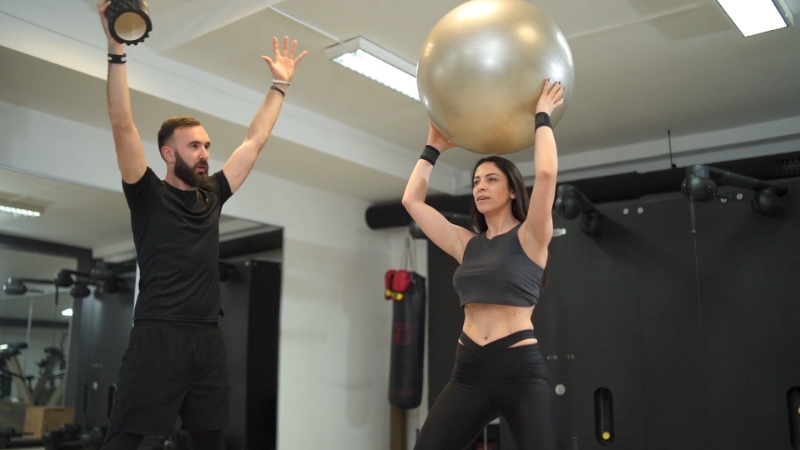
alternative
workout
helps
prevent
sore
or
injured
clients
from
feeling
discouraged
Goals
vary.
Bodies
vary.
Energy
levels
vary
from
day
to
day.
A
trainer
might
craft
the
perfect
plan,
only
to
have
a
client
say
their
knee
started
acting
up
again
or
they
pulled
a
muscle
mowing
the
lawn.
That’s
normal
life
stuff.
So
it
pays
to
be
flexible.
-
Plan
B
(and
C,
D,
E…):
An
alternative
workout
for
when
a
client
shows
up
sore
or
slightly
injured
can
save
them
from
feeling
defeated.
Instead
of
shelving
the
entire
session,
pivot
to
movements
that
work
around
the
setback. -
Modifying
Exercises:
A
bunch
of
people
think
push-ups
are
impossible
because
of
wrist
pain,
for
instance.
Tweaks
like
using
push-up
bars
or
an
elevated
surface
can
solve
the
problem.
Adapting
can
mean
the
difference
between
a
client
quitting
and
a
client
progressing. -
Staying
Open
to
Feedback:
If
a
client
says
an
exercise
isn’t
hitting
the
right
spot,
a
pro
trainer
welcomes
that
input.
Rigidly
sticking
to
the
day’s
plan
can
overlook
genuine
needs.
Create
PT
suggests
layering
in
variety
while
keeping
core
elements
consistent.
Professionalism
Punctuality,
reliability,
and
ethics
might
not
sound
exciting,
but
they
are
critical
for
building
trust.
When
someone
hires
a
trainer,
they’re
placing
their
health,
time,
and
money
in
that
person’s
hands.
Showing
up
late
or
texting
through
a
session
doesn’t
exactly
scream
“I’ve
got
your
back!”
Growth
Never
Stops
Professionalism
also
means
staying
educated.
New
studies
come
out
all
the
time
about
exercise
science,
nutrition,
and
mental
wellness.
A
trainer
who
is
always
learning
can
filter
out
fads
and
keep
clients
on
a
steady
track.
Workshops
and
certifications
offer
the
trainer
a
way
to
refine
skills
so
people
get
the
best
support
possible.
Motivation
and
Inspiration
Encouraging
words
might
seem
small,
but
those
moments
can
be
the
spark
that
keeps
a
client
going.
It’s
not
enough
to
say,
“Just
do
it.”
A
personal
trainer
who
truly
cares
will
show
they
believe
in
their
client.
That
leads
to
an
unstoppable
drive.
Realistic
Targets
@jack_valentine12
Replying
to
@Ben
Keep
Consistent
with
gym,
exercises
and
diet….
And
get
me
as
your
Personal
Trainer
💪
#pt
#gym
#fitnes
#coach
#scottish
♬
original
sound
–
Jack
Valentine
Setting
achievable
goals
gives
clients
something
concrete
to
celebrate.
Maybe
someone
wants
to
do
one
unassisted
pull-up
or
run
a
5K
without
stopping.
That
might
not
be
as
flashy
as
professional
competitions,
but
it’s
something
personal
and
meaningful.
The
Health
and
Fitness
Institute
points
out
that
people
who
see
small
wins
will
hang
in
there
longer.
Leading
by
Example
Trainers
who
walk
the
walk
demonstrate
how
discipline,
consistency,
and
healthy
choices
can
transform
a
life.
That
doesn’t
mean
parading
around
like
a
fitness
model
24/7.
It
does
mean
showing
that
sustainable
habits
are
possible.
Create
PT
highlights
that
authenticity
resonates.
Clients
can
see
right
through
fake
enthusiasm
or
someone
who
preaches
cardio
but
never
breaks
a
sweat
personally.
Smart
Planning
and
Prep
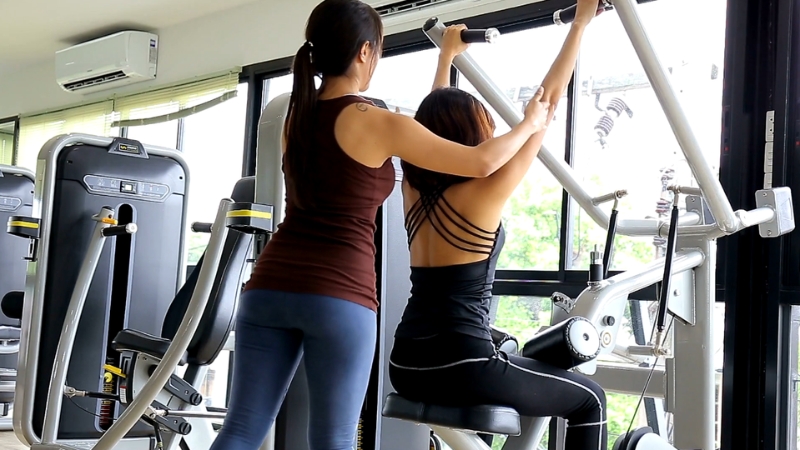
weights,
rest,
and
nutrition
logs
provide
clear
evidence
of
progress
It’s
not
just
about
saying
“Hey,
do
10
reps.”
A
strong
plan
weighs
a
client’s
fitness
level,
medical
history,
and
personal
goals.
Then
it
lays
out
logical
steps
for
progress.
Tracking
Details
There’s
huge
value
in
recording
performance.
Reps,
weights,
rest
intervals,
nutrition
logs—those
metrics
give
tangible
evidence
of
progress.
Seeing
numbers
steadily
climb
(or
body
measurements
shift)
provides
motivation
on
days
when
morale
might
lag.
Adjusting
on
the
Go
One
misconception
is
that
trainers
only
plan
for
the
day’s
session.
Top-tier
pros
zoom
out
to
a
bigger
view.
They
check
how
a
client’s
program
fits
into
day-to-day
life.
If
a
client
took
a
stressful
red-eye
flight,
it
might
be
wise
to
tweak
the
session.
Lack
of
sleep
can
lead
to
sloppy
form
and
potential
injury.
It’s
about
reading
the
situation
and
acting
accordingly.
Holistic
Health
U
don’t
“burn
off”
the
effect
of
the
junk
food
u
eat
by
going
to
the
gym.
Exercise
is
good
for
strength
&
mental
health.
It
does
very
little
for
the
metabolic
chaos
&
inflammation
u
caused
with
ur
diet.
The
only
way
to
stop
that
is
to
stop
eating
junking—
Cza
The
Trainer
(@Czathetrainer)
March
8,
2025
Fitness
is
only
one
aspect
of
being
healthy.
Workouts
matter,
but
so
do
eating
habits,
sleeping
patterns,
and
mental
wellness.
Ever
tried
to
power
through
a
training
session
on
three
hours
of
sleep?
Or
keep
up
with
a
heavy
lifting
program
while
living
on
junk
food?
Not
exactly
fun.
-
Nutrition
Guidance:
Nutrition
advice
can
be
as
simple
as
suggesting
more
veggies
and
protein,
though
some
trainers
dive
deeper
into
macronutrient
balances.
That
approach
should
stick
within
legal
and
ethical
bounds,
of
course.
Referring
clients
to
a
registered
dietitian
is
a
way
to
go
deeper
if
needed. -
Stress
Management:
Chronic
stress
can
spike
cortisol
levels,
leading
to
fatigue
and
other
hurdles.
Aware
trainers
suggest
relaxation
techniques
or
encourage
activities
like
yoga,
walks,
or
journaling
to
cope. -
Sleep
and
Recovery:
Muscles
grow
during
rest,
not
just
in
the
gym.
Encouraging
consistent
sleep
routines
helps
ensure
the
body
is
ready
to
keep
pushing.
A
well-rested
client
is
likely
to
have
better
performance,
fewer
injuries,
and
a
brighter
mood
overall.
Injury
Prevention
and
Client
Well-Being
A
single
tweak
or
strain
can
derail
progress
for
weeks.
Solid
trainers
know
how
to
reduce
risks
and
watch
for
red
flags.
Proper
Form
First
Clients
often
don’t
realize
how
slight
misalignment
can
lead
to
a
pulled
muscle
or
a
more
serious
problem.
Demonstrating
the
correct
form
and
offering
gentle
corrections
builds
confidence.
Videos
can
help,
too—some
trainers
record
quick
clips
for
reference.
Progressive
Overload
It’s
tempting
to
throw
a
newcomer
into
heavy
lifts
for
dramatic
results,
but
that’s
a
recipe
for
disaster.
Small,
strategic
increases
in
weight,
speed,
or
intensity
protect
joints
and
muscles.
Pushing
too
hard,
too
soon
is
risky.
The
best
trainers
figure
out
an
ideal
pace
for
each
client.
Essential
for
Real
Change
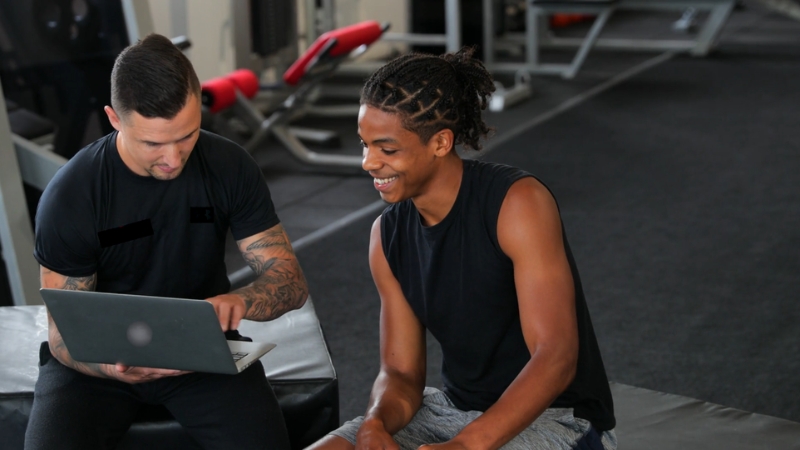
helps
prevent
a
client
from
quitting
Progress
can
be
slow.
People
might
want
to
see
abs
after
a
month,
but
real
transformations—both
physical
and
mental—take
time.
A
patient
trainer
can
calm
clients
who
feel
discouraged,
especially
if
the
number
on
the
scale
isn’t
dropping
fast
enough
or
if
they’re
still
stuck
on
the
same
dumbbell
weight.
Emotional
Support
It’s
powerful
to
have
someone
say,
“You’re
doing
great.
Don’t
be
too
hard
on
yourself.”
That
sense
of
support
can
keep
a
client
from
giving
up.
A
trainer
who’s
short-tempered
or
dismissive
can
cause
a
client
to
retreat
or
feel
like
a
failure.
Building
Trust
Over
the
Long
Haul
Deep
bonds
form
when
a
client
realizes
their
coach
has
their
back
no
matter
what.
It’s
not
just
about
session
five
or
six;
it’s
about
six
months
down
the
road.
Patience
is
critical
for
building
a
rapport
that
spans
entire
fitness
journeys.
Wrapping
It
Up
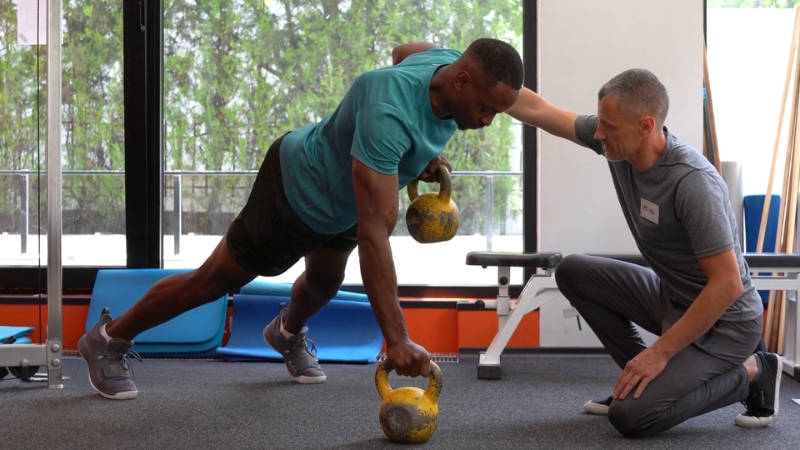
knowledge
is
essential,
but
communication,
empathy,
flexibility,
and
safety
make
great
trainers
stand
out
A
personal
trainer’s
role
stretches
far
beyond
leading
lunges
and
counting
reps.
Top-notch
pros
connect
with
real
people,
learn
about
unique
goals,
and
approach
everyone
with
compassion
and
creativity.
Fitness
knowledge
is
the
foundation,
yet
communication,
empathy,
flexibility,
and
a
commitment
to
safety
truly
set
outstanding
trainers
apart.
It’s
all
about
guiding
people
to
healthier,
more
vibrant
lives.
And
that
means
a
trainer
needs
patience,
heart,
and
an
ever-evolving
toolkit
of
skills.
Keep
all
that
in
mind
next
time
you’re
hunting
for
a
trainer
or
aiming
to
level
up
in
the
industry.
It’s
about
people
first,
workouts
second,
and
everything
else
will
follow
once
there’s
trust
and
understanding.
Human
beings
are
complex,
and
coaches
who
appreciate
that
side
of
the
job
can
make
magic
happen,
one
session
at
a
time.